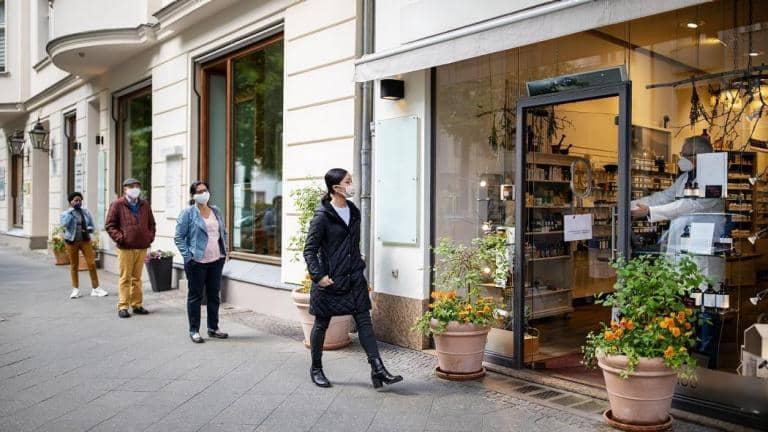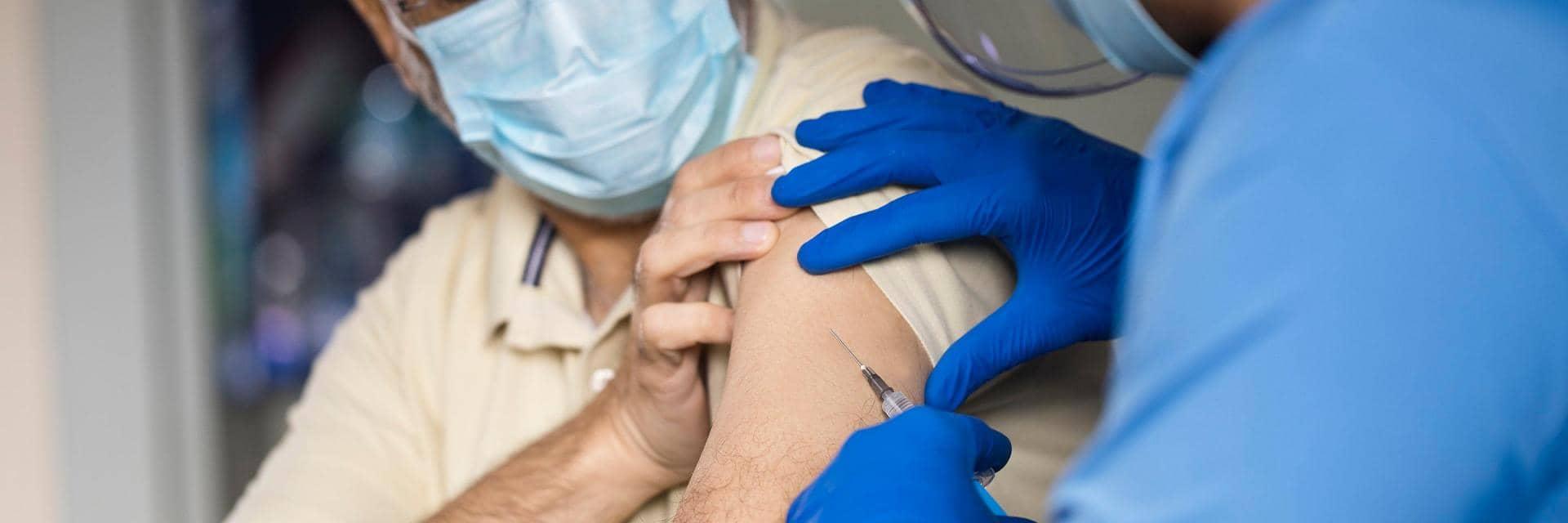
Market Perspectives May 2021
Investor sentiment remains buoyant, despite accelerating Indian COVID-19 cases, with encouraging economic signs in the US and China.

07 May 2021
By Narayan Shroff, India, Director-Investments
You’ll find a short briefing below. To read the full article, please select the ‘full article’ tab.
As another wave of COVID-19 infections sweeps India, the economic outlook rests on the drive to vaccinate people. With volatility likely to be elevated in financial markets, staying the course in Indian equities and debt and diversifying portfolios through global equities, gold and private markets might be considered to help protect wealth.
India faces a faster spreading COVID-19 virus as a second wave of infections hits the country. While quicker spreading mutations and variants are being blamed, so are lax safety protocols as the economy reopens and large events were held.
And while tighter restrictions on people related to the pandemic are being introduced in some areas, the severity and length of such measures introduced by some state governments and local authorities still seems less than seen last year.
The increase in new cases follows increased testing, partly aimed at getting employees back to work. However, the situation is raising concerns due to the gaps in medical infrastructure, causing delays in testing and treatment, limiting availability of hospital beds and even oxygen shortages in coping with new cases.
Rapid vaccination rollout
India may have the second worst number of COVID-19 infections globally, according to Johns Hopkins University in the US, but the country’s vaccination drive seems to be going well. That said, as vaccine manufacturers report raw material shortages, there are shortage in the doses in some parts of the country.
The central government is aiding the vaccination drive with the widening of eligibility to those of 18 years old and over, approvals for more vaccines, liberalised distribution and pricing to incentivise producers and suppliers, a relaxed policy on vaccine imports and plans to significantly increase vaccine production. These should help the recovery prospects in the medium term.
In its third serological survey of India released on 4 February, the Indian Council of Medical Research (ICMR) noted that more than one in five Indians have been exposed to coronavirus. The recovered and/or vaccinated cases (at least first doses) are growing at much faster pace compared to newly reported positive cases in the country.
Economic outlook aided by rollout success
Although every death is tragic, COVID-19 led death rates remain relatively low in India given its vast population and those more vulnerable are fast being vaccinated. Critical illness requiring hospitalisation or resulting in deaths appears to be falling following vaccination.
Allowing businesses to reopen with vaccinated staff and other strict safety protocols may provide more certainty to businesses. This should ultimately help improve employment and income visibility and aid growth in demand and consumption.
While the second wave may delay the economic recovery timelines, the focus on vaccination also increases the hope that this may be the beginning of an end. While the second quarter may experience some contraction in growth through this volatility and uncertainties, the second half of the year is likely to see a sharp recovery in business and market sentiment.
Fiscal and monetary policy to support the recovery
Full normalcy looks sometime away in India as the best case scenarios suggest that 40-50% of the population will be vaccinated by the end of this year. Therefore, safety and precaution measures are likely to be in place for some time; travel restrictions, especially international travel, may still be needed; and fear of variations/mutations of virus and another wave may keep demand recovery below full potential.
India’s fiscal and monetary policy support, with “whatever it takes” vaccination stance, should continue longer than expected (growth-supportive guidance from policymakers are already aligned). Financial markets may look through the inflation risks for now, aided by normal Monsoons and the government’s policies to allay any supply-side pressures or tax rate normalisation (such as on oil).
In the near term, markets may fear supply chain pressures, including labour migration; a slowdown in inventory build in non-essentials; plus pressures on lenders from any potential interest moratoriums and stress on small and medium enterprises (SME’s). Hence, banks and non-banking financial companies may come under pressure. However, investors may start looking through this phase sooner rather than later, especially if helped by extra support announcements like additional targeted long-term repo operations and/or targeted fiscal initiatives to support these lenders and smaller businesses.
Returning liquidity flows and diverging growth prospects
The seemingly successful virus vaccination has been key to driving global liquidity flows into the country. The economic recovery in US in that respect, and to some extent China, has been better than that seen in India.
The dispersion in growth prospects in the recovery, and positive signs in the biggest economies, should continue to help Indian exporters in the near term, who are also benefiting by the recent depreciation in rupee against the US dollar. However, short-term volatility in risk assets remains likely. Diversification, active management and a barbell strategy to allocating portfolio assets may help protect wealth at such times.
Despite another wave of infections in India, with a sharper pent-up demand-led recovery likely, valuation corrections seem to be attracting flows back to the country. Businesses and investors hoping to see the recovery sooner rather than later and fearing missing out again on any sharp bounce back should keep their risk allocations and investment plans intact.
Cautiously optimistic on Indian equities
The outlook for Indian equities remains positive, the asset class benefiting from the cyclical rebound being seen in the global economy. Earnings momentum continues to improve, driven by sales growth (including of the reflationary variety), market share gains, a lower cost of financing and cost cuts. Indian equities continue to attract more foreign inflows, a trend that will probably persist given the revival in activity and earnings. However, valuations are coming under pressures from factors toggling between higher global bond yields and second wave concerns.
Any market corrections may be shallow and short-lived. Volatility remains likely in the near term, providing opportunities to build positions opportunistically if so desired. Given the elevated level of valuations, we remain cautious on Indian equities for now.
We prefer “quality”, sustainable businesses with strong earnings growth momentum, resilience and pricing power. While the gap in valuations between large capitalised (cap) and small and mid-caps has narrowed over the last few months, we prefer small and mid-caps as the headwinds facing these businesses recede, looking through any second wave problems. Participation in the equity market continues to broaden. A relatively strong global recovery should also continue to support cyclicals like metals and cement producers.
High credit spreads should narrow
Despite the near-term risks from rising coronavirus infections, the outlook for growth remains positive. Gross domestic product expansion in fiscal year 21/22 is likely to be around 10%, albeit with some downside risk. Inflation should remain within the Reserve Bank of India’s (RBI) acceptable band (2% to 6%) in the coming months.
For now, systemic liquidity is expected to remain ample with the central bank redeploying liquidity towards more productive opportunities at the longer end of the yield curve. While foreign portfolio investor flows into bonds remain negative, ample liquidity and buoyancy in domestic participation and flows are expected to keep demand- supply dynamics on an even keel.
India’s economic revival should eventually normalise monetary and liquidity conditions but in the medium term we feel that the RBI is unlikely to significantly change monetary policy stance until a durable and sustainable recovery is underway. On the credit front, the outlook for Indian issuers seems to be improving. With the recovery and the RBI’s continued support, high credit spreads should narrow. Judiciously, we continue to add issuers in sectors which may gain from economic revival.
Asset allocation
As the effects of, and uncertainty around, the pandemic linger and as the economy revives, Indian assets are likely to experience periods of elevated volatility and sharp sector rotation. As such, allocating assets with appropriate diversification remains key and allocations to global equities, gold and private assets (both debt and equity) may be worth considering.

Investor sentiment remains buoyant, despite accelerating Indian COVID-19 cases, with encouraging economic signs in the US and China.
This communication:
Any past or simulated past performance including back-testing, modelling or scenario analysis, or future projections contained in this communication is no indication as to future performance. No representation is made as to the accuracy of the assumptions made in this communication, or completeness of, any modelling, scenario analysis or back-testing. The value of any investment may also fluctuate as a result of market changes.
Barclays is a full service bank. In the normal course of offering products and services, Barclays may act in several capacities and simultaneously, giving rise to potential conflicts of interest which may impact the performance of the products.
Where information in this communication has been obtained from third party sources, we believe those sources to be reliable but we do not guarantee the information’s accuracy and you should note that it may be incomplete or condensed.
Neither Barclays nor any of its directors, officers, employees, representatives or agents, accepts any liability whatsoever for any direct, indirect or consequential losses (in contract, tort or otherwise) arising from the use of this communication or its contents or reliance on the information contained herein, except to the extent this would be prohibited by law or regulation. Law or regulation in certain countries may restrict the manner of distribution of this communication and the availability of the products and services, and persons who come into possession of this publication are required to inform themselves of and observe such restrictions.
You have sole responsibility for the management of your tax and legal affairs including making any applicable filings and payments and complying with any applicable laws and regulations. We have not and will not provide you with tax or legal advice and recommend that you obtain independent tax and legal advice tailored to your individual circumstances.
THIS COMMUNICATION IS PROVIDED FOR INFORMATION PURPOSES ONLY AND IS SUBJECT TO CHANGE. IT IS INDICATIVE ONLY AND IS NOT BINDING.